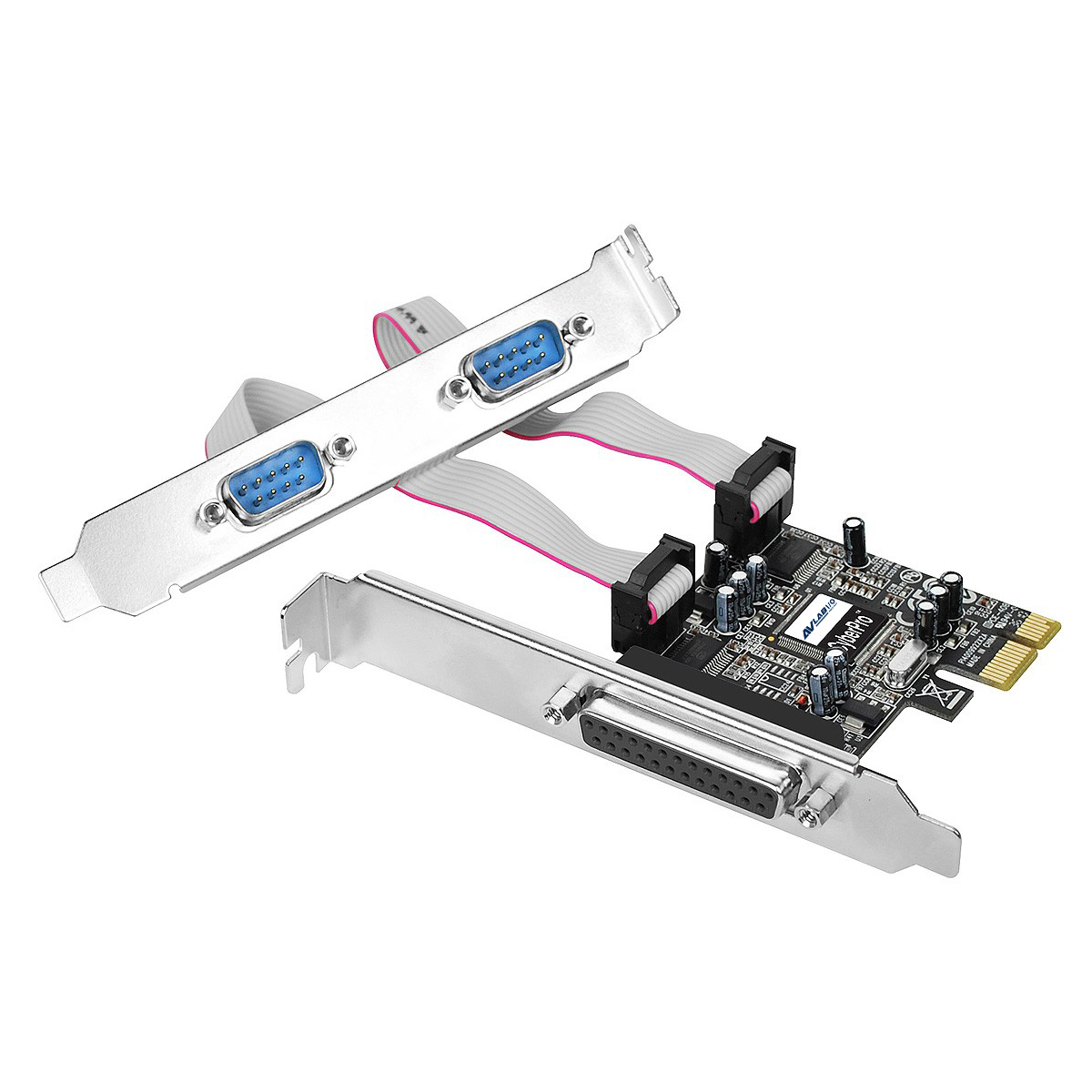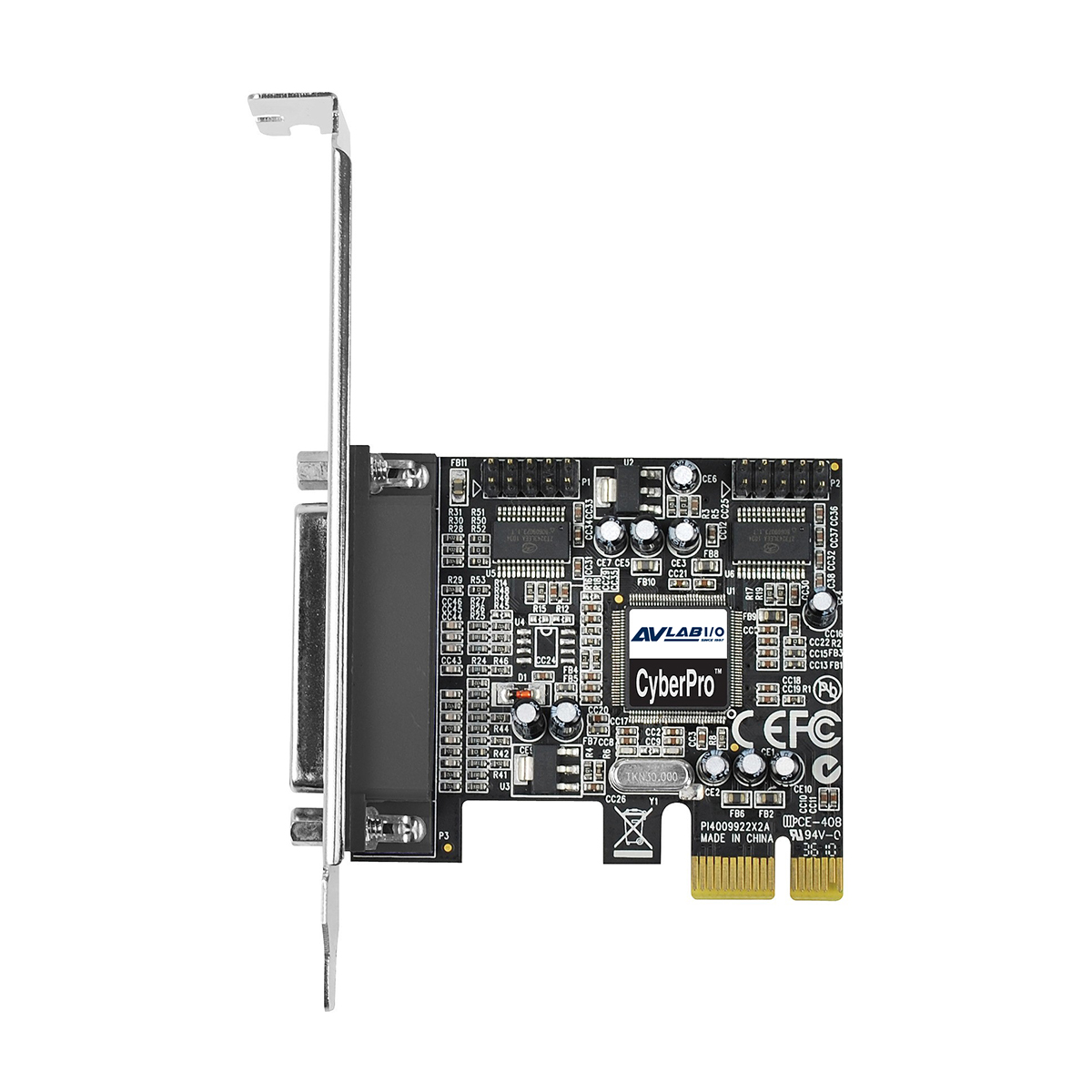Highlights
EXPANSION
Adds 2 RS-232 9-pin serial and 1 ECP/EPP parallel port to your PCIe enabled system
HIGH SPEED DATA
Two 16C650 UART serial ports support data rate up to 16Mbps
PARALLEL PORT MODES
Supports ECP, EPP and Buffered SPP parallel port modes
Specification
Chipset: Moschip MCS9901CV-CC
Compliant with PCI Express Base Specification, Revision 1.1
PCI Express (PCIe) x1 controller
Serial Interface:
■ Two 16C650 UART 9-pin serial ports
■ Supports up to 16Mbps
Parallel Interface:
■ Compliant with IEEE 1284-1994 parallel port standard
■ Supports EPP, ECP and Buffered SPP mode
Product dimensions: 4.72" (H) x 3.11" (W) x 0.79" (D)
Product weight: 0.11lbs
Environmental conditions
■ Operating temperature: 32 to 122 degrees F (0 to 50 degrees C)
■ Operating humidity: 20% to 80% RH
■ Storage temperature: -4 to 140 degrees F (-20 to 60 degrees C)
■ Storage humidity: 10% to 90% RH
Certifications/Standards: FCC, CE, RoHS
Warranty: Lifetime limited
Country of origin: China
FAQ
- How do I confirm that Windows detects my expansion card?
- To confirm that Windows detects your expansion card, complete the following: Press the Windows key+R, type devmgmt.msc, and press Enter. In Device Manager, under the appropriate heading, confirm that your expansion card is listed and that there isn't an exclamation mark next to it. For example, a RS-422/485 controller card would be under Ports (COM & LPT)
- How do I confirm that Windows detects my USB device?
- To confirm that Windows detects your USB device, complete the following: Press the Windows key+R, type devmgmt.msc, and press Enter. In Device Manager, under the appropriate heading, confirm that your expansion card is listed and that there isn't an exclamation mark next to it. For example, a USB device would be under Universal Serial Bus controllers.
- How can I make sure my serial port is working in Windows?
- To check whether or not an RS-232 serial port is working, perform an RS-232 loopback test by doing the following: If your serial port is not female, convert it by taking a female/female cable or gender changer and plugging it into the serial port. Take a metal paperclip or wire and cross pins 2 and 3. If you look closely at the female end, the pins should be numbered. Open a telnet session on the COM port number of the device that you are testing. Note: To open a telnet session on the COM port, you need a telnet client like PuTTY or Hyper Terminal. Windows XP comes with Hyper Terminal. When the session is open, anything you type into it you should see. The loopback test fails when you cannot see what you are typing. If the loopback test fails, make sure that the serial cable or gender changer that you are using works and that the adapter is in the correct port.





